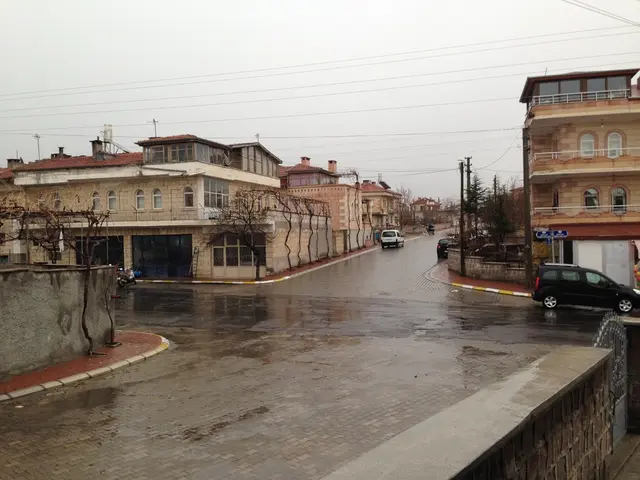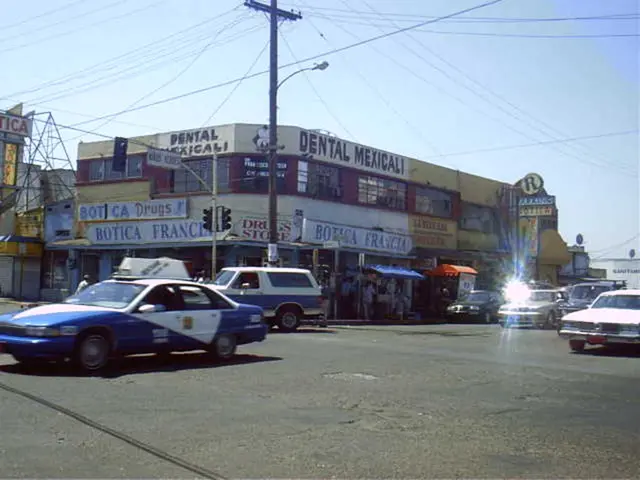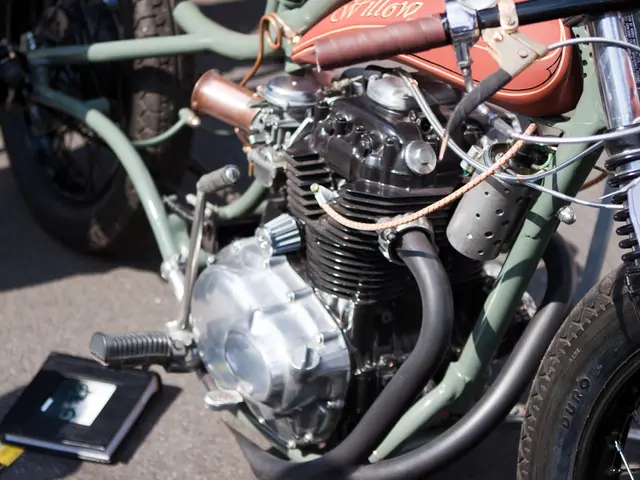From Cameras to Camaraderie: Elon Musk's Robo-Taxi Ambitions Unveiled
Robo-taxis, spearheaded by Musk, set for launch this month.
Elon Musk, the electrifying CEO of Tesla, aims to give the electric car giant a much-needed boost, including tackling the competition in the autonomous vehicle market. However, concerns about safety remain, as Musk unveils an unconventional approach to robo-taxis.
Mark your calendars, because the Tesla robotaxi service is scheduled to commence on June 22. But don't hold your breath - according to Musk, Tesla is anxiously guarding against safety issues, so there's a chance the date may change. Originally, Tesla intended to kick off the service with a small fleet of 10 to 20 vehicles in Austin, Texas.
By June 28, Tesla also plans to make history by delivering an Austin-produced Model Y vehicle right to the customer's doorstep. Intriguingly, Tesla plans to use standard Model Y vehicles for their robo-taxi service. This raises eyebrows among experts who question the reliability of autonomous Teslas. Musk, unfazed, expresses confidence in the technology, claiming all new Tesla vehicles are equipped for self-driving capabilities. This fuels Musk's frequent boasts of a fleet of millions of autonomous Teslas hitting the roads soon, positioning Tesla as the dominant player in the market.
But the million-dollar question is, can Tesla's robo-taxis compete with industry leaders like Waymo, sister company to Google? Waymo boasts over 250,000 passenger trips each week with 1,500 robotaxis in four US cities. In comparison, Tesla has yet to demonstrate consistent reliability with autonomous driving technology.
So, what's Tesla's secret sauce? Instead of relying on Lidar sensors, which are used by leading robotaxi companies like Waymo, Musk prefers to bet on the less expensive, camera-only approach. This decision, while potentially cutting costs and simplifying the technology, has raised concerns about safety and functionality in more complex or challenging situations.
Does Tesla's gamble pay off? The future remains uncertain. With a cautious launch in Austin and redundant human monitoring, Tesla aims to build trust with regulators and the public. But as Musk pushes the boundaries of technology, he may tread a fine line between innovation and risk.
Industry Insights
- Reliability and Safety: Tesla's decision to forgo Lidar sensors has raised questions about the reliability of autonomous Tesla vehicles in various situations. While independent studies have uncovered frequent errors with Tesla's current autonomous driving systems, the tech titan maintains a lower accident rate than the U.S. average based on internal data.
- Scalability Advantage: Tesla's camera-only approach offers potential cost and scaling advantages, making it easier to deploy and maintain the technology on a large scale. However, this reliance on cameras may limit the technology's performance in more complex or adverse conditions compared to multi-sensor systems like Waymo's.
- Debate Continues: Trust remains a substantial challenge for Tesla, heightened by controversies surrounding CEO Elon Musk and recent vehicle recalls. As Musk strives to assert Tesla as a market leader, the successful rollout of the robotaxi service may determine Tesla's destiny in the autonomous vehicle domain.
Comparing Tesla's Robo-Taxis with Waymo's Robotaxis
| Feature | Tesla Robo-Taxi (Camera Only) | Waymo Robotaxi (Lidar + Multi-Sensor) ||-----------------------|--------------------------------------|------------------------------------------|| Sensor Suite | Cameras + AI | Lidar, Radar, Cameras || Current Autonomy Level| L2/L3 (with geofenced L4 pilot) | L4 (fully driverless in some areas) || Deployment Scale | Limited, geofenced pilot | Multiple cities, large operational area || Proven Reliability | Occasional errors, needs monitoring | Smooth, predictable, fewer interventions || Safety Record | Lower accident rate than U.S. average (per Tesla), but some notable incidents| Strong safety record, rare interventions |
- Despite Tesla's planned use of cameras in their autonomous vehicles, the technology's performance in complex or challenging situations may be limited compared to multi-sensor systems like Waymo's, which include Lidar and radar, raising questions about reliability and safety.
- As Tesla's robo-taxi service continues to develop, the company faces the task of building trust with regulators and the public, particularly in light of controversies surrounding CEO Elon Musk and recent vehicle recalls, a challenge that Waymo, with its more established track record, does not face as heavily.








